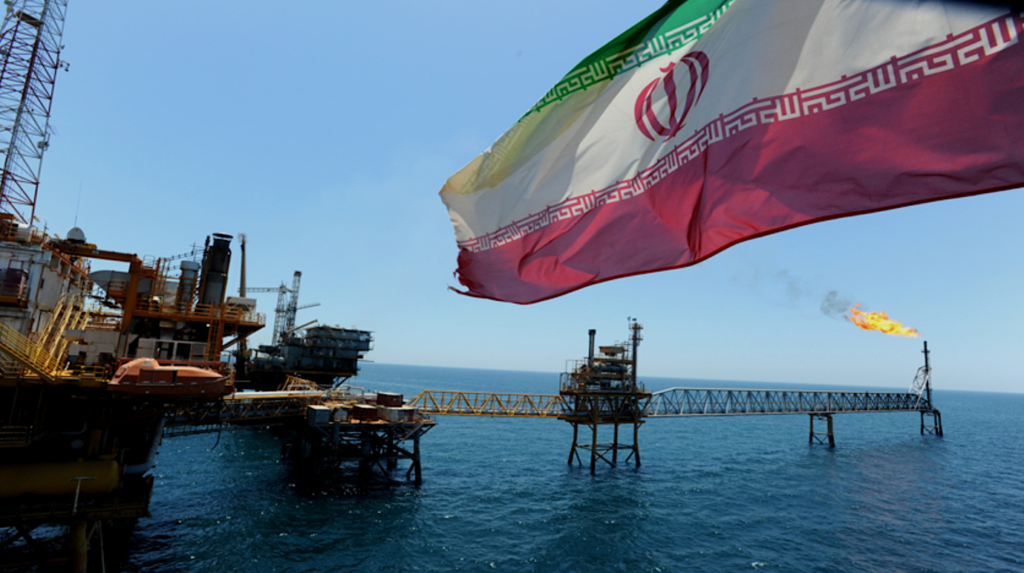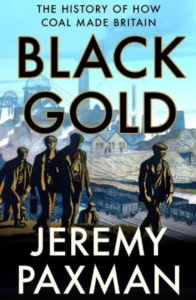Hartley Bank colliery, Balk Lane, Netherton 1966 © Wikicommons/Tony oldroyd

Coal was the driving force behind the industrial revolution all around the world. It certainly happened that way in the United Kingdom. It made several fortunate landowners very rich indeed, while the men and women (yes, there were women mining coal, too) lived in cheaply built homes without indoor sanitation or running water. If they had upstairs rooms, (the lucky ones may even have had two) they could only be reached by means of crudely-made ladders from the rooms below. Rich landowners didn’t think the miners needed much more than the breath in their lungs, as long as that breath helped them to dig out the black gold that enriched their employers so generously whilst very often making the actual workers ill. The miners might spend an hour underground, crawling on their hands and knees in the pitch darkness just to reach the coalface, but they weren’t paid for that. Payment only began when their picks reached the coal seam itself. “The past, like the future, is indefinite and exists only as a spectrum of possibilities,” wrote the brilliant physicist Stephen Hawking. The past, of course, was built on the fuel of the day, coal, which made a small number of people extremely rich whilst causing irreparable lung disease and other various serious ailments and physical damage to limbs and muscles and even eyesight for those working in the industry. Eventually, it would be coal that brought them electricity, too, through a vast network of power stations, most famously through Battersea Power Station in central London, whose four massive chimneys, although long disused, remain a London landmark. At its peak, Battersea burned a million tons of coal a year.

Now it looks as if the future may also involve some risk to life and limb, despite campaigners urging governments to ensure that the coal stays in the ground. Coal was very important in North-East England, where I was raised. The coking plant behind my parents’ house dictated which day would be my mother’s washday. If you weren’t taking cognisance of smoke output and wind direction, the clothes came in from the washing line covered in “smuts”: black specks released from the chimneys of the plant in the coke-making process that would stick firmly to any washing that was hanging on a line. Perhaps I should explain that the coking process involves heating the coal in the total absence of oxygen to a temperature of more than 600°C, to drive off the volatile components of the raw coal, leaving a hard, strong, porous material that is high in carbon content. Coke consists almost entirely of hydrocarbon. It’s just one of the disadvantages of having a coking plant as a near neighbour, but that is what you get if you live in a coalfield. The resulting coke was essential for the production of steel, another vital local industry. It also fuelled my parents’ water heating facilities. But coal (and its derivatives) is the fuel of yesterday, isn’t it? Apparently not. Some countries – Germany among them – are extending the planned run times of their remaining coal-fired power stations. It’s mainly (but not exclusively) because Vladimir Putin, Russia’s megalomaniac president is using his country’s gas and oil supplies as a weapon, restricting the options of those who wish he’d stop

Meanwhile, there would seem to be plans afoot to bridge any gaps in the fuel supply by carrying on with coal, or its derivative, coke. Yes, it makes the air dirty (as my mother could have confirmed) but it’s available and it inarguably provides heat. Certainly, when I was first married, my wife and I heated our house with coal. Back in the 1960s, when I was new to journalism, I reported on various miners’ strikes and demonstrations (coal being essential to life at that time and the North East coalfield being an important source) and on several occasions I met the UK miners’ leader Arthur Scargill, frequently demonised by Britain’s right-wing press in articles written by those more interested in the politics of the affair than in accuracy. I rather liked Scargill and found him unfailingly friendly and helpful, although I know that’s a view that few parts of the country’s media shared at the time. But there is a rather different moral issue involved in Europe’s current fuel problem. For instance, Germany has been importing some €1.8-billion of Russian gas, oil and coal every month, which must be helping to fill Putin’s war chest. German chancellor Olaf Schulz has made the point that cutting off the flow would hurt Germany more than Russia, even though some other European governments have called for an out-and-out total embargo. According to The Economist magazine, Schulz has found unlikely allies among the trade unions, who agree that stopping Russian energy imports could lead to a recession.
They have predicted that Germany’s GDP could shrink by more than 6%, even if an alternative source of supply could quickly be found. The plain fact is, of course, that economists very seldom agree with one another about anything, but neither are they keen on taking risks. Nor are industrialists, of course.

As The Economist magazine points out, the IMK think tank, which tends to favour trade unions, has published a study backing the government’s predictions. According to The Economist: “It says halting energy imports from Russia would cause a deep recession with GDP shrinking by more than 6% even if alternative suppliers could make up for half of the gas supplied by Russia.” In Germany’s case, of course, it’s not just gas but coal, too. Thus, says The Economist, “The INK finds itself in rare agreement with industrial lobbies such as the BDI (Bundesverband der Deutschen Industrie), the association of German industry.” The magazine goes on to quote Siegfried Russwurm, who heads the BDI and who warned that “talk about an EU embargo on Russian energy is ‘playing with fire’ and would harm the EU more than the aggressor.”
| Don’t go “bang”!
Certainly, Russia is extremely rich in terms of natural energy, including coal. Moscow says very little about the size of its supply, but the oil giant BP plc has estimated that it has as much as 33-trillion cubic metres of natural gas at its disposal. OPEC gives an even higher estimate: almost 49-trillion cubic metres, while it’s reckoned that there are vast reserves, yet to be discovered. We’ll come to that shortly. In its gaseous state, it takes up a lot of room, which is why it’s chilled down to -2600 Fahrenheit (-162.220 Celsius) for storage or transportation, thus taking up 600 times less volume than when it has in its gaseous form. Of course, it has to be transported in specialised containers before it can be ‘re-gasified’, as it’s called and made ready for use. As for its composition, Wikipedia provides an excellent explanation.

“Natural gas (also called fossil gas or simply gas) is a naturally occurring mixture of gaseous hydrocarbons consisting primarily of methane in addition to various smaller amounts of other higher alkanes.” The site goes on to explain that low levels of trace gases such as carbon dioxide, nitrogen, hydrogen sulphide and helium are also generally present. According to the Encyclopaedia Britannica, it is more ubiquitous than oil, being derived from land plants and creatures and also from other aquatic organic matter. In most cases, it is also linked with the production of coal, putting its origins back to the Carboniferous and Early Permian times, which means between 359-million and 273-million years before the present. It’s been maturing down there for a very long time.
For its existence, of course, we have the trees to thank. As Peter Wohlleben points out in his excellent book “The Hidden Life of Trees”, trees photosynthesize, producing hydrocarbons to fuel their own growth. Over the course of their lives, they can store up to 22 tonnes of carbon dioxide in their trunks, branches, and root systems. The process would seem to be positive in every way. “When they die,” writes Wohlleben, “the same exact quantity of greenhouse gases is released as fungi and bacteria break down the wood, process the carbon dioxide, and breathe it out again.” He goes on to add that: “The assertion that burning wood is climate neutral is based on this concept.” But he also makes the point that this is an over-simplification; the way a forest works is far more complicated than that. “It’s true that some of this carbon dioxide does indeed return to the atmosphere after a tree’s death, but most of it remains locked in the ecosystem forever.” Wohlleben points out that the CO2 ends up as humus, which continues to get more and more concentrated until eventually it turns, after inconceivably many centuries, into – possibly – bituminous or anthracite coal. The period of its evolution was marked by glaciations and a low sea level, with amphibians developing as the first backboned creatures to walk the land, where ginkgo trees, early conifers and cycads provided food and cover, before they started the long journey to providing us with fuel.

The atmosphere at that time had lost most of its carbon dioxide, which, coupled with a sharp fall in temperatures, led to the extinction of 50% of contemporary animal life. There were only two continents back then, plus the odd island or two, though both were huge: Laurasia and Gondwana. The lack of oxygen in the water meant that dead matter didn’t decay, instead being compressed by the vast weight of the water above it. Eventually, the dead vegetation was turned to coal, whose usefulness has been proven over and over again, creating wealth from utility. Gas is even more ubiquitous than oil, according to the Encyclopaedia Britannica, being derived from both land-based and aquatic vegetation. In its early stages, decomposition creates what’s known as ‘marsh gas’, driven by anaerobic microbes that are unable to tolerate oxygen, even in the minutest amounts. As a result, biogenic gas is only found in poorly drained swamps, bays, and occasional lake bottoms. During the mature stage of the generation of petroleum, normally at depths of between 750 and 5,000 metres, a lot of thermal methane is created, together with the oil, while at greater depths – 2,900 metres or more – it is primarily gas containing liquid hydrocarbons (known in the industry as ‘wet gas’) that is formed. Later, at depths greater than 5,000 metres, oil in its natural form is not stable and the main product obtained from such a deposit is methane gas. Such gas, with all its potential for providing heat and energy, is in great demand, of course.
| Turn up the gas
In 2022 gas began to prove less easy to get hold of. Lower volumes of gas have been reaching Europe through pipelines because of the tense political situation following Russia’s invasion of Ukraine, so record volumes of liquefied natural gas (LNG) have been getting to the EU and the UK from a variety of sources, especially the United States. Russia is strongly placed to use its ready access to natural gas (and firm grip on its supply and distribution) as a weapon, possessing between 30% and 40% of the total volume of the stuff on planet Earth. It is also most certainly the cleanest fuel known, because when it burns, all that is produced is carbon dioxide and water.

It’s not very easy to transport, however, because being under pressure (as it has to be) it can explode if not handled carefully. It requires very expensive specialised tankers to keep it stable. It’s an overlooked fact that not all fossilised fuels are equal. Letters to successive editions of the satirical British magazine ‘Private Eye’ (nos. 1584 and 1585) from Doug McRoberts and Thomas Sweeney, for instance, mention how “heritage” railways in the UK, still popular with those who remain nostalgic for steam-powered railway engines, are now dependent on foreign (very often Russian) coal. McRoberts and his wife were stranded in the Scottish mountains a little way short of their destination (but a bit too far to walk) because of clinker in the firebox. It is often found in poor quality Russian coal, and in this case it had put out the fire. The scenery, of course, around Strathspey was (and always is) magnificent, but reaching one’s destination may rank higher among one’s priorities than gazing entranced at mountains and roaring streams, however beautiful. Sweeney points out that the small volume of coal we now import for such uses is often won at disproportionately high environmental costs in countries with very poor safety standards. In his letter to Private Eye, McRoberts quotes the train crew’s explanation for the unscheduled halt: “Bloody Russian coal. It’s rubbish. Full of clinker. Have to clear the firebox and get the fire going again…” Putin appears to get everywhere, even onto historic steam trains run by volunteers, it seems. The late John McCain, a former US naval officer and later senator, once described Russia as “a gas station masquerading as a country.” Obviously not one that gave out green stamps…
According to the Worldometer website, Russia has coal reserves totalling a very impressive 176,770,840,800 tons, making it the world’s second largest coalfield. In fact, it can boast some 16% of the world’s total volume, or 767.3 times its annual consumption. To put it another way, at its present rate of consumption, its coal reserves should last it another 763 years. Russia also has the largest proven gas reserves in the world (48-trillion cubic metres), according to OPEC, which says that Russia has some 24% of global supplies although the oil giant BP has said that Iran probably has more. It’s an unfortunate fact, perhaps, that the world’s greatest supplies of fuel are in two of the world’s most awkward countries. As mentioned earlier, Russia also has vast but so-far undiscovered gas reserves estimated at 6.7 trillion cubic metres – probably. Russia is a big consumer, too, getting through some 457 billion cubic metres a year, just behind the United States.

Obviously, we cannot just sit down and manufacture natural gas; it takes many millions of years and is a process over which we will never have any control. We don’t even fully understand it. It is an undisputable irony that as the world gets hotter through global warming, our powers for keeping it warm and for providing sufficient energy are somewhat lacking. What a shame that we can’t use one to control or overcome the other.
In 2021, production of hard coal in the EU was 57 million tonnes, 79 % less than the 277 million tonnes of 1990. From 2018 to 2021, the EU reduced its consumption of both hard coal and brown coal (which we tend to overlook) by 25%. Brown coal, also known as lignite or subbituminous coal, is are low-rank coals with a high (more than 50%) moisture content. Brown coal is not always brown, by the way, either; they can vary from yellow to black and can even show stratification, with layers of concentrated plant material visible. With the falling demand for coal (which may be changing), coal mining jobs have been in steady decline for years. In the US in January 2022, it was estimated that the coal industry employed around 36,500 Americans, down from nearly 90,000 ten years earlier. It’s a similar picture in Europe, but in the United States, coal mining jobs now make up only around 0.02% of the 160 million-strong civilian labour force.

There are more people employed in the travel industry, as aircraft mechanics and technicians or even as fitness trainers. The European Commission is not sitting on its hands over the crisis, although its room for manoeuvre is limited. Its solution, so far, is the REPowerEU plan (why does the EU insist on silly and almost incomprehensible names for its proposed solutions to difficulties?). The Bruegel think tank says that EU governments have earmarked some half a trillion euros in a bid to shield Europe’s citizens and enterprises from soaring energy costs. Will this really help? Can it be enough? As the old saying goes, only time will tell, but at least it shows that the issue is not being ignored or forgotten.
More than 60% of world consumers get their electricity through power generating stations fuelled by the burning of coal, oil and natural gas, and even with nuclear in the picture that’s unlikely to change soon. Whether or not the Commission can come up with a solution that actually works is another matter entirely, of course, but citizens and businesses will undoubtedly need all the help they can get to survive this coming winter. The organisation Social Europe points out that there are no guarantees. “The issue is whether this helps to accelerate the transition to a renewables-based European energy system,” it asks in a press release, “which will permanently bring down energy bills, ensure energy security and contribute to a safer climate – or ends up in a ‘bonfire’ of fossil-fuel payments, subsidies and investments.” Social Europe clearly has some doubts about the viability of it all. “The fact that EU countries have spent €105-billion on Russian fossil fuels since the war over Ukraine escalated and fossil-fuel companies are announcing record profits does not suggest our leaders have been quick to learn their lesson.”
| Digging for penury
According to Bloomberg UK, massive windfall profits are predicted, enriching the oil shareholders hugely while winter energy bills look set to soar to triple their level of a year ago. The energy firms are anticipating excess profits of around £170-billion (€194-billion). Take BP, for instance. Having enjoyed the high prices that followed Russia’s invasion of Ukraine, its profits have tripled to £7-billion (€7.99-billion).

Shell is also enjoying the bounty. Between April and June 2022, its profits of £10-billion (€11.41-billion) has led to a promise to shareholders of pay-outs worth £6.5-billion (€7.42-billion). Since we’ve been talking about gas prices, we mustn’t leave out Centrica, which enjoyed operating profits for the six months ending in June 2022 of a relatively modest £1.34-billion (€1.53-billion), which is five times higher than the company’s profits for the same period last year. Many in Europe must be cursing Russia for the fuel-starved winter freeze that lies ahead that ought to be avoidable, but not the shareholders in the giant energy companies. The unexpectedly large profits should at least help to mitigate the worst effects. I must, however, mention Saudi Aramco. Owned by the Saudi state (which is not hard up for a few cents), it reported profits of £40-billion (€45.65-billion) for just the second quarter of 2022. With so much effortless profit awaiting exploitation underground, it makes you want to go out and buy a long hand-drill. Or a spade, maybe. Even a strong drinking straw?
In March of 2022, whatever angry words were coming out of Brussels (and aimed at Moscow), China and the EU remained the two main destinations for Russian coal exports being transported by sea. Mind you, 2020 had been a bad year, as noted by the shipbroker Banchero Costa, who wrote that: “following a disastrous 2020, with the world hit by lockdowns and recession pretty much everywhere, global seaborne coal trade managed to rebound to some extent over the last twelve months.” Even the downturn doesn’t seem so bad in context. “In the full twelve months of 2021,” the shipbroker wrote on its website, “global seaborne coal exports increased by +45% year-on-year to 1,168-million tonnes from 1,117-million tonnes in 2020, according to the vessels tracking data from Refinitiv.” Before you cheer, though, the website report continues:

“This however is still well below the levels we had in pre-Covid times, being 9.8% down from the 1,295-million tonnes shipped during 2019.” That information comes from Dry Bulk Market, Hellenic Shipping News in March 2022.
Should Russia be worried? Indeed, is it worried? Apparently not. The on-
line report continues, “The Russian Federation is the third largest exporter of coal in the world, after Australia and Indonesia.” That aside, it seems that Putin has just had laid claim to several Ukrainian cities he says are really be “Russian” so as to legitimise (in his eyes, at least) the looting of Ukraine’s museums and other storehouses of wealth. Notices on the outside of these buildings bear notices informing Russian soldiers that everything inside is actually Russian and should be taken back to Russia. And there’s more: “in 2021, Russia accounted for 15.2% of global seaborne coal shipments. Russia’s seaborne coal exports in the 12 months of 2021 increased by 9.6% year-on-year to 177.2 million tonnes. This was a significant rebound from a -6.5% year-on-year decline in 2020 caused by Covid lockdowns in Europe and elsewhere. Previous years also saw a positive trend, with Russian coal exports increasing by 5.1% year-on-year in 2019 and by 7.9% year-on-year in 2018.” I wouldn’t be surprised if the Kremlin chefs rolled out the kulich and apple cakes, along with plenty of vodka in celebration. As one Ukraine-born commentator put it on-line, “Russia lives in a parallel reality of ‘alternative facts’ and 0% truths.”
There is another downside to the resurrection of coal. It produces smog, the word being a kind of portmanteau word for smoke and fog. On 8 December 1952, London and the south of England experienced a “temperature inversion”, as it’s called, locking the vast quantities of smoke coming from homes and factories somewhere near ground level with no way of escape. It’s a not uncommon meteorological event.

As Jeremy Paxman puts it in his excellent book about the coal industry, ‘Black Gold’, the smog “cooled and then settled at ground level where it formed a dense cloud.” To call it a ‘cloud’ doesn’t really do it justice. With coal in use just about everywhere in the capital, and with the government having finally lifted a ban on burning what was called ‘nutty slack’ (an especially dirty fuel), smoke was everywhere. Within a week more than 4,000 people had died, coughing all the way. Visibility sunk to almost zero and even league football matches were cancelled, while the buses that so many relied on to get them to work, school or the shops (all with scarves tied over their mouths and noses to keep out the filth) had to be guided around the streets by men carrying flaming torches. According to Paxman, greyhound racing at White City had to be cancelled because the dogs couldn’t see the artificial hare in order to chase it. The Port of London police were issued with walking sticks that they could tap along the edges of the pavements. A performance of La Traviata at the famous Sadler’s Wells Theatre had to be suspended at the end of the first act because the audience were coughing too loudly, while in cinemas people were complaining that they couldn’t see the screen. Similar weather conditions had caused problems before and Paxman informs us that “by the middle of the 17th century, viewing the London smog (from a distance) was a tourist attraction,” while the writer John Evelyn complained that smog had turned St. Paul’s Cathedral into a “loathsome Golgotha”.
| No hot stoves, much hot air

Which brings us neatly to COP 27, the big climate conference that seems to be embarrassing the UK government. The organisers would like the UK’s new King, Charles III, to attend and he has expressed a willingness to do so, but the British government has said a very firm “no”, and the Charles of today is not in a position to order the beheading of the Prime Minister. As a result, King Charles organised a sort of mini-COP 27 inside Buckingham Palace. It’s certainly a big enough venue as well as being a poke in the eye for prime minister Rishi Sunak and his cabinet. At the real event, held in Sharm el-Sheikh, Egypt, the organisers have said there can be no back-sliding on the promise to stick to the established goal: to slash greenhouse emissions by 45 percent before 2030. But while the promises are being reiterated, Germany, Italy, the Netherlands, Greece and Hungary have all announced that they plan to extend the life of coal-fired power stations and factories and re-open these that have been recently closed, or at least lift the cap on how many hours the coal can be burned for. They don’t really have much choice. Even Austria, which in 2020 celebrated the closure of its last coal-fired plant, has announced plans to re-activate the system in the event of emergencies. Indeed, according to the International Energy Agency (IEA), coal consumption in Europe is likely to reach 8-billion tonnes in 2022, thus reversing a downward trend and matching the all-time record set in 2013, with Europe accounting for 5% of the burning.
The European Commission blames the worsening situation on Russia’s “weaponization” of energy supplies, with the switch from gas to coal taking up to three winters to complete. Meanwhile, the EU is still urging other countries to phase out coal. The West has been accused (fairly, it would seem) of hypocrisy by subsidising coal and doing much too little to phase it out. The EU is still committed on paper, at least, to cutting greenhouse gas emissions by at least 55% by the end of this decade and to become climate neutral by 2050. It’s hard to see how that can be achieved, but former Climate Action Commissioner Connie Hedegaard says she’s working with Commission colleagues in the energy and transport departments to set new climate targets for 2030. This would mean setting a 2050 “road map” towards a low-carbon economy. Of course, the EU’s objective to set 20% renewable energy targets, boosting renewable energy by 20% by 2020, was missed. What a surprise!

It was Samuel Johnson, the 18th century English poet, playwright, essayist, moralist, critic, biographer, editor, lexicographer and devout Anglican, who is supposed to have written: “the road to hell is paved with good intentions.” He almost certainly didn’t say that at all. He probably wrote: “Hell is full of good meanings, but heaven is full of good works”, being a devout Anglican. Intentions are laudable but fulfilling them is far from easy and is never cost-free. In any case, it doesn’t matter; off-the-cuff remarks are seldom recorded but the written word is, of course. It is a certainty that many people have set out with good intentions only to abandon them in the face of reality. As for meeting Europe’s greenhouse gas goals, it seems unlikely that we shall, or at least not in the near future: the whole idea of fixing targets is to aim at achieving them, if humanly possible. OK, so we miss them more often than we hit them, but at least we’ll know we tried. We will (if only at a very gradual snail’s pace) reduce our greenhouse gas emissions over time; everybody knows it’s the right thing to do. On a Europe-wide basis only the European Commission has the power to effect change, which it’s trying to do, but it won’t happen quickly, certainly not overnight and probably not even in my lifetime. But as long as we’re trying to head in the right direction, that must be good enough to be going on with. In real life, things are seldom perfect, but if we’re sufficiently encouraged to continue with the fight, that’ll have to do. For the time being, anyway.

